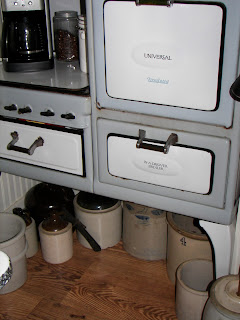When I was a very young mom, with little financial resources to spend on Christmas gifts and decorations, I always made many of both. Not that it was a burden, I enjoy this kind of thing. My problem is I never quite analyze if a project will become repetitive. I don't do repetitive well or with a joyful heart.
I decide to make mother, mother-in-law, and sisters-in-laws each a pine cone wreath. I bought the wire forms, the wire and gathered a blue zillion (blue zillion is larger than just a zillion for you non-math students) pine cones. I'm so ready.
Each cone must have a length of wire wrapped around the bottom portion and then tied to the frame. Pretty simple. And then it moves into repetitive. To look good, full, and totally covered, it takes a red zillion (that's about half a blue zillion) pine cones tied to the frame. I finished all five and haven't done another since. I had mine for years, occasionally changing the ribbons, until it simply dried to disintegration.
Other years I've made Christmas aprons, purses, painted pictures, painted cards, and on and on. I've finally stopped making large batches of any one thing because I've finally stopped long enough in the excitement phase to remember more math: We have a big family + repetitive tasks = B O R I N G. This year I'm making a patch quilt - oh my goodness talk about repetitive - but that's another subject.
If you too enjoy making Christmas gifts, here are some good projects:
- Orange scented pomander balls: Prick the orange skin with an ice pick to make it easier to insert whole cloves. Insert cloves in a pattern. Tie the entire orange in coordinated netting and tie the top with a bow. Wrap in tissue and insert in a plastic bag to keep the scent until it is opened by the recipient.
- Neck wrap: Double stitch soft fleece fabric in a pillow case type bag. Bag should end up about 12 x 4 inches. Leave one end open. Double the fabric if it is thin. Insert dry rice (not instant), flax seed and natural lavender until it is about half to 3/4 full. Sew (very securely) the open end. This can be heated in the microwave and put around the neck for a calming sensation. Make sure it's not too hot by heating in 30 second intervals BEFORE placing on the skin.
- If you have access to cedar shavings, save them for a scented closet hanger. Sew three sides of a colorful (not heavy) fabric. The size should be about 4" wide x 6" tall. You may sew lace or other trim around the top. Fill the bag with the shavings, tie the top closed with a ribbon (including a loop for hanging) and I like to add a simple sturdy ornament. You could make your own stuffing with cinnamon sticks, dried roses petals, or other fragrant dried herbs, flowers, or barks. Cedar does have moth repellent qualities.
- Build a birdhouse from found or salvaged items. Just needs to have drainage holes in the bottom, a vent near the top and has the capability to be cleaned out at year end. If they are for birds, make sure all components are weather proof and functional for the birds' needs. If it is simply decorative - glue guns and whatever are fine. I have loads of plans if you want a copy or there are free plans on the net.
- Bird feed ornaments: Some of the ready-made have bird feed glued to Styrofoam balls or wreaths. I'm not sure that is wise for the bird's sake. None of the examples will last in a lot of moisture but hopefully, the birds will eat them first. Mix seeds, peanut butter, lard, corn meal, and flour until it is the consistency of very stiff dough. (You can also add nuts and fruit) Form into balls with a loop of twine embedded in the middle and coming out the top for a hanger. Don't make any larger than your two hands can go around or it will be too heavy to hang. Lay on a wax paper covered cookie sheet and freeze for a couple of days. Wrap in net or discarded onion/potato mesh, and tie a ribbon at the top. Wrap in plastic wrap to give as a gift. Don't let it get too warm before giving.
- Dried flower uses: For those of you that save and dry flowers and leaves, this is the perfect time to use in gift arrangements. A simple little 4 inch grape vine wreath or a small bouquet tied with a pretty ribbon for a table are good uses. A small canvas painted a color that coordinates with your flowers, then glue the dried flowers in an artful arrangement, frame and sign. The smaller, the more charming.
- Canned goods: For those in your family, a jar of your canned tomatoes, pickles, etc. is always a welcome treat come winter. You might want to include a ribbon around the top and an old family recipe.
- Then there's that pine cone wreath . . .
Use your talents and your garden supplies and your gifts will be original, perhaps inexpensive, and from the heart.






































